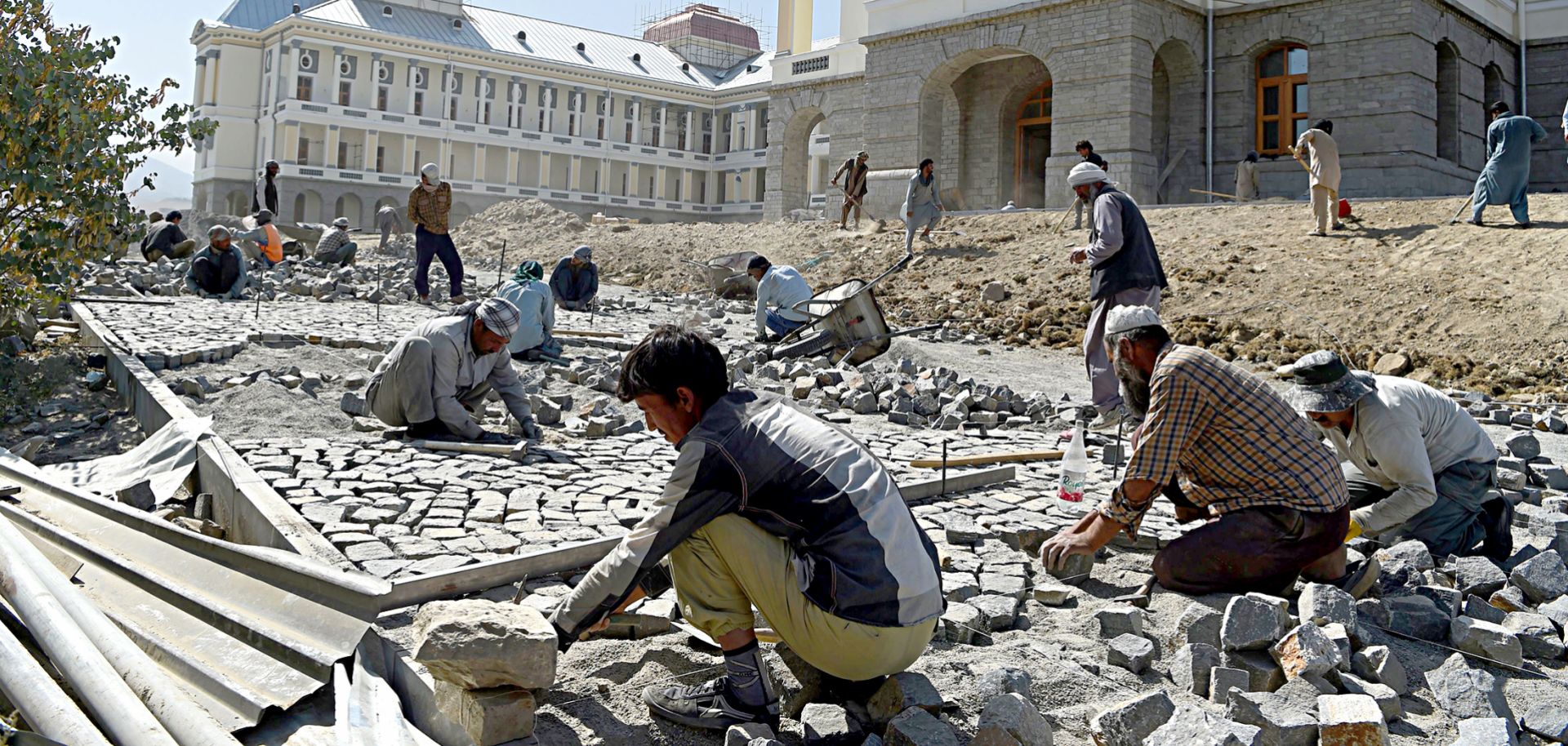ASSESSMENTS
Afghanistan Prepares for a Financial Future Without the U.S.
Dec 11, 2019 | 10:30 GMT

Afghan laborers work on the exterior renovation of Darulaman Palace in Kabul on Aug. 8, 2019. As the United States looks to slowly stop funding Kabul, Afghanistan's leaders will need to find a way of raising more of their own funds.
(WAKIL KOHSAR/AFP via Getty Images)
Highlights
- A U.S.-Taliban peace deal will pave the way for intra-Afghan negotiations aimed at ending the country's conflict.
- Kabul's lack of domestic revenues will require Washington to continue funding security and reconstruction operations in Afghanistan well beyond 2020.
- Accordingly, the United States wishes to end the conflict to grow Afghanistan's $20 billion economy so the country can generate more domestic revenues and gradually wean itself off international funding.
Subscribe Now
SubscribeAlready have an account?
